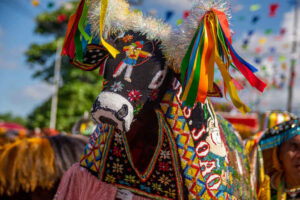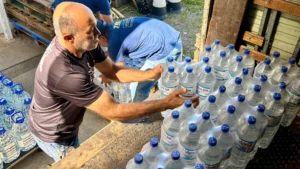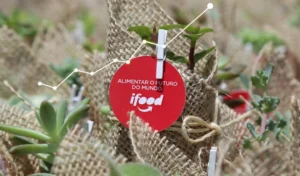The release of greenhouse gases in the atmosphere, such as CO2, is a big concern for a delivery business. Therefore, in 2021, iFood started to offset all emissions in advance of your deliveries. This was the starting point for a more complete strategy, which today has three fronts of action: compensate, reduce and regenerate.
“At the same time as we compensate on the one hand, on the other we act to reduce emissions by encouraging the use of non-polluting modes in deliveries, such as bicycles and electric motorcycles. Regenerating forests to sequester CO is just as important as reducing and compensating.2 and combat global warming”, summarizes Bruno Pieroni, sustainability coordinator at iFood.
Below, he and Alexandre Lima, sustainability manager at iFood, explain the three fronts of the company's strategy to mitigate the effects of CO2 into the atmosphere and have a positive impact on the environment.
Front 1: offset emissions from deliveries
Today, when you place an order on iFood, the carbon dioxide emissions from that delivery have already been compensated. In general, companies tend to look at past emissions and then offset them. But, as iFood already had metrics for both the volume of polluting gases emitted per kilometer driven in the delivery operation and projection of orders in the future, decided to compensate in advance CO emission2 in deliveries in June 2021.
“We use the same model as other companies, but looking forward, not backwards”, says Alexandre. “We assume this compensation, we do not pass this responsibility on to the restaurants or delivery drivers.”
Bruno explains that offsetting emissions is important to encourage projects that promote not only forest recovery but also the preservation of the environment in several other ways — even preventing further release of polluting gases.
In 2021, this compensation was made through the purchase of carbon credits that benefited forest conservation projects focused on combating deforestation in the Amazon. In the second half of 2021 alone, around 1.2 million square meters of forest were protected — the equivalent of 125 official football fields. “The purchase of carbon credits is a way to encourage these projects”, adds Bruno.
In 2022, the carbon credits used to offset emissions will also be used for renewable energy generation projects and actions to prevent the release of methane gas (which is also involved in global warming). “We diversified our strategy to invest in good projects to combat deforestation in the long term and also encourage those who produce clean energy, especially wind, to make the country's energy matrix more sustainable”, explains Bruno. “Energy production is one of the biggest emitters of CO2 all around the world."
Front 2: investing in clean modes
Given the start of offsetting emissions, iFood also created a strategy to reduce them in the delivery operation. Still in 2021, the company assumed the public commitment to become neutral in pollutant emissions making at least 50% of deliveries using non-polluting modes.
“When we launched our commitment, we started looking at the innovation and logistics fronts, which involve, for example, drones, robots and bicycles, and we proposed the challenge of bringing sustainability to all these areas”, comments Alexandre.
Result: more than 15 thousand delivery people have already used the company's bicycles iFood Pedal to make 5.7 million deliveries, avoiding the emission of a thousand tons of CO2 In the atmosphere, according to the 2021 Impact Report. In June 2022, iFood launched, in partnership with Voltz, a electric motorcycle for delivery people —another non-polluting vehicle option. “Today, deliveries by bicycle and electric motorcycle are the two fronts with the greatest potential for scaling up emissions reductions”, explains Bruno.
Front 3: forest regeneration
Planting more trees also helps mitigate the effects of emissions, as plants sequester carbon by consuming CO2 of the atmosphere in photosynthesis — a process in which this gas is transformed into glucose (which will be its food) and other compounds, such as oxygen released into the atmosphere.
At the beginning of 2022, the iFood started planting 50 thousand seedlings in Porto Feliz (SP) and Marabá Paulista (SP), in partnership with SOS Mata Atlântica and using resources that were raised in the app, coming from customer donations. This means an area of new forests the size of 20 football fields — and which, in 20 years, has the potential to remove up to 8,300 tons of CO2 of the atmosphere, the equivalent of 28 million deliveries.
“We want to return the resources we use to the environment. Forest regeneration is a great way to do this and help combat global warming”, explains Bruno. “I imagine that, in the future, regeneration will have the same weight as compensation for our business.”
For Alexandre, this third front will be increasingly indispensable. “Compensating and reducing is no longer enough. Companies need to look at the planet with a regenerative perspective.”


